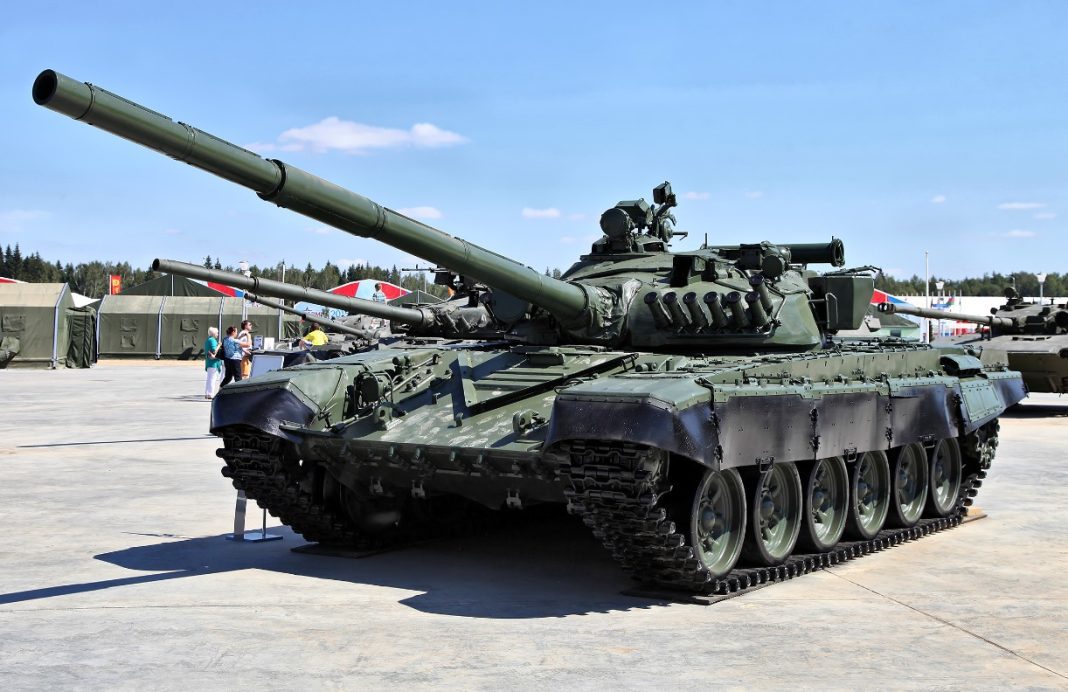After 42 months of intense fighting in Ukraine, Russia’s stock of modern tanks, including many newer models, has dropped to dangerously low levels. Russian forces have lost more than 4,000 tanks during the conflict. To put this into perspective, Russia had roughly the same number of tanks ready for frontline service before the war expanded in February 2022. This number includes older T-72A tanks. Russia had previously held these tanks in reserve.
Russia’s Tank Supplies Run Dangerously Low
Because of these heavy losses, the Kremlin has had to search for tanks it once thought were no longer usable. Satellite images show that many old tanks park outside Uralvagonzavod, Russia’s main tank factory located over 1,600 kilometers from Ukraine. When tanks appear outside this factory, it usually means workers are preparing to repair, refurbish, or upgrade them before sending them back to fight.
However, many of these tanks are very old, some nearly 50 years old, and lack modern features common in today’s armored vehicles. This is a significant change from earlier in the war, when Russia could rely more on modern tanks. Now, the Russian military is pulling out older tanks from long-term storage in Siberia, a vast region more than 2,000 kilometers from the war zone.
🚨 NATO’s first sabotage trial: Finland charges Russian-linked tanker crew over Baltic Sea attack
The Old T-72 Tanks: What Makes Them Different?
The tanks being brought back are mostly early versions of the T-72 model, specifically the T-72A tanks. These tanks weigh around 46 tons and have a crew of three. While not the oldest model in the T-72 family, the T-72A tanks are close in age. The first T-72 tanks entered Soviet service in the early 1970s, followed by improved versions in the 1980s, such as the T-72B. The T-72B had better armor, a more powerful engine, and a stabilized 125-millimeter gun that could stay accurate even when the tank was moving.
In contrast, the older T-72A tanks lack many of these modern upgrades. These tanks have spent decades in storage bases, like the 349th Tank Storage Base in Siberia’s Topchikhinsky District. During this time, they were mainly used as a source of spare parts rather than active combat vehicles. But with many newer tanks destroyed in Ukraine, Russia has no choice but to rely on these old T-72A tanks.
🛢️ India pulled into Russia sanctions web — EU targets shipping firm and oil tanker captain
Estimates suggest that around 1,000 of these older T-72A tanks remain in storage. The number of newer 1980s-era tanks, like the T-72B and T-80 variants, is rapidly shrinking. Because Russia produces only about 300 new T-90M tanks each year, it cannot replace its losses fast enough, forcing it to send the old T-72A tanks back into battle.
T-72A Tanks Face Challenges on the Battlefield
The return of T-72A tanks brings many challenges for the Russian army. These tanks have not been used in battle for decades, and many are rusty or partially damaged after long-term storage in harsh Siberian conditions. Their mechanical parts may fail more often, and their firepower is not as advanced as newer tanks.
One key disadvantage is that T-72A tanks do not have stabilized main guns. Stabilized guns allow tanks to fire accurately while moving, a critical feature in modern tank warfare. Without it, the T-72A tanks struggle to hit moving targets or shoot accurately while on the move. This reduces their effectiveness against Ukrainian tanks and anti-tank weapons, which often have better equipment.
For comparison, Ukraine upgraded its Leopard 1A5 tanks in the 1980s and equipped them with stabilized guns. This upgrade gives Ukrainian forces an edge in tank battles, even though they have limited overall tank numbers and manpower.
🔥 Ukrainian tank stuns Russian armor at point-blank range in Siversk showdown
Despite these limitations, Russia continues to rely heavily on T-72A tanks, along with troops on foot and soldiers using motorcycles for movement. The Russian army continues to suffer heavy losses in Ukraine, with more than 20,000 soldiers killed or wounded every month. To keep its forces up, Russia recruits around 30,000 new soldiers monthly, sometimes using confusing contracts or financial incentives.
Even without many modern tanks, Russian forces continue to fight and occasionally push back against Ukraine’s brigades, which are also facing shortages in soldiers and equipment.
The use of these old T-72A tanks highlights the serious strain the war in Ukraine has placed on Russia’s military resources. It shows that Russia’s tank forces are being worn down to the point where even decades-old tanks, once thought unusable, are being returned to the battlefield to keep the fight going.
